2022 Acura RDX Vs 2022 Lincoln Corsair Comparison

What we have here are two ends of the luxury compact SUV spectrum. It’s the Acura RDX vs Lincoln Corsair comparison.
Every automaker has an entry in this segment. Some aim more for traditional luxury, prioritizing smooth progress and effortless waftability. Others go sporty, with powerful engines and aggressive styling.
We’ve collected an example from each approach here. The Acura RDX has one of the strongest four-cylinder engines in this space, with a dramatic interior that makes no bones about its focus. On the other hand is the Lincoln Corsair, which promises the sort of fuss-free roadtrip attitude that makes the Navigator such an appealing package, only three sizes smaller.
Managing Editor Mike Schlee and I kicked off the new year with a week in both. What we found were two SUVs with distinct strengths—and two SUVs that bucked our expectations.
Get a Quote on a New Acura RDX or Lincoln CorsairInterior and Cargo Space
RDX: The RDX doesn’t subscribe to the minimalism trend that’s sweeping the luxury scene. Its interior is the Everything Everywhere All At Once of the segment—well, okay, there are no hot dog fingers. The door panels wrap around the layered dashboard design, which folds over into the center console. Buttons, actual buttons, dot the central section, but the main event is the oversized drive mode selector and push-button shifter.
I’m of two minds here. On one hand, there is no stronger statement of intent on where the RDX falls in the category than the prominence of this drive mode dial. But on the other hand, this isn’t a Type S. On top of that, it relegates all the more often-used controls to tiny, matte black plastic buttons.
There are no qualms with the materials, however. There’s a lot of black, sure, but there’s also a tasteful amount of brightwork, and the suede with red accent stitching is a nice touch. The seats are nicely supportive in either row, with good lower lumbar support in particular.
The RDX is a deceptive design, with more interior space than you might expect. Headroom is an even 40.0 inches (1,016 millimeters) in front, and there’s a large panoramic roof to keep the interior feeling airy. In back, riders have an even 38.0 inches (965 mm) of both headroom and legroom, making the RDX one of the more spacious options in the class—but not, as we’ll soon cover, more spacious than the Corsair.
The RDX does hold the cargo carrying advantage, though. It will swallow 29.5 cubic feet (835 liters) of stuff, or 58.9 cu ft (1,668 L) with the second row folded flat.
Corsair: The Corsair has a more traditional cabin, and it’s the one both Mike and I prefer over the week. Well, except for the excess piano black, which covers the entire center console for guaranteed smudge marks. The simple, horizontal design emphasizes the width in the Corsair, which is ironic, since it has noticeably less shoulder room than the RDX.
The brown-and-black layout looks classy, and the materials are easily as good as the ones in the RDX. Visibility is better too, specifically out the rear, where the RDX’s large tailgate struts eat into the rear window shape.
Front seat comfort is the Lincoln’s ace in the hole. This tester comes equipped with the 24-way Perfect Position seats, and the name fits. Being able to adjust each side of the thigh support might seem excessive, but it ensures your resting leg gets the right cushioning. These seats give the Lincoln a pampering feel that’s hard to match in the segment—or even the one above.
While it doesn’t feel the larger of these two, break out the tape measure and the Lincoln scores higher in all major measurements. It gives up a half-inch in front headroom (39.5 in / 1,003 mm), but scores more in back (38.7 in / 983 mm). Legroom measures a huge 43.2 in (1,097 mm) in front, and an adult-friendly 38.6 in (980 mm) in the rear.
With 27.6 cubic feet (782 L) behind the rear seats, the Corsair is just slightly smaller than the RDX in the cargo-carrying game. Drop the second row and the gap remains, with 57.6 cubes (1,631 L).
Bottom Line: Both of these compacts are spacious and comfortable, so there’s no loser there. We prefer the Lincoln’s sedate vibe, and its excellent seats propel it to the first category win.
2022 Acura RDX vs 2022 Lincoln Corsair: Tech and Features
RDX: One thing the recent RDX facelift didn’t change—and probably should have—is the infotainment system. Or rather, the dreaded True Touchpad Interface. Acura’s system makes sense in isolation: the eight onscreen icons align with the eight sections of the touchpad. (The right-side bar is for the right panel.) But in practice, on roads that are anything less than pristine, it can be a frustrating game of chance to select the right icon. The input lag only exacerbates this issue.
Switching to Apple CarPlay or Android Auto (both wireless) doesn’t help, either. Do this and the touchpad now works like that of a laptop. It doesn’t always register swipes though, so you’ll be flicking away trying to change apps. As the keeper of the RDX for the majority of the week, I also ran into numerous instances where CarPlay would blip in and out. It also took a few minutes—yes, minutes—to load up on each start of the RDX. The wireless charger will also stop working if the phone moves even slightly. Sometimes, wired is best.
The rest of the Acura tech suite is much better. The surround-view camera provides a comprehensive view around the vehicle. The head-up display is bright and provides a good amount of info. Bonus points to Acura for dropping a lot of the HUD controls right beside the wheel, too. We also give the ELS Studio 3D sound system some of the top marks in the class, for a crisp, powerful sound.
Acura’s standard safety kit includes full-speed adaptive cruise control, lane keep assist, automated emergency braking, traffic sign recognition, and more. It all works as expected; special note to the blind-spot monitoring for keeping the warning light inside the cabin. That’s the correct way to do it, so thanks, Acura.
Lincoln Corsair: The Corsair’s 8.0-inch touchscreen looks pretty much the same as the one in the Bronco Sport. That’s because, other than the faintest of re-skinnings, it is.
So no, this isn’t the most fancy system, and yes, that does clash with the Corsair’s baby-Aviator feel. But it will do what you need without fuss, and the (wired) Apple CarPlay and Android Auto work flawlessly.
(It’s important we note that, for 2023, the Corsair gains a huge 13.2-inch screen running Sync 4. Unfortunately Ford did not have one available for testing at the time of the test.)
The Lincoln features a hideaway wireless charger tucked in the center console, a la Porsches. It’s great for ensuring your phone actually gets the juice, though it will get pretty warm in there. It also keeps distractions down, so good on Lincoln.
Like the Acura, the Lincoln features a useful 360-degree camera. Its safety suite largely mirrors the Acura too, with lane-keep assist, adaptive cruise control, and automated emergency braking. The Lincoln does add a useful parking assist, and a phone-as-key feature. The 14-speaker Revel sound system, while powerful, can’t match the clarity of the ELS setup.
Bottom Line: Neither one of these systems wowed us, nor are they at the front of the class. We’ll take the Lincoln’s old but reliable system over the frustrating Acura’s, though. The Acura fights back with a sweet sound system and a whole lot of friendly standard tech. The Lincoln requires multiple options packages to match.
Powertrain, Driving Feel, and Efficiency
RDX: Both of these lil’ ‘utes come equipped with 2.0-liter turbocharged engines and all-wheel drive. Front-drive is standard in the US; it’s unavailable in the Great White North. The RDX has the power advantage, its detuned Civic Type R mill kicking out 272 horsepower and 280 pound-feet of torque. A 10-speed automatic handles shifting duties. There’s plenty of power for a four-pot, and even a decent sound out of those outsized exhaust ports. While it felt muscular around town, the RDX’s power delivery felt the softer of the two SUVs on the highway.
“In Sport mode [the RDX is] quite fun,” notes Schlee. “Torque vectoring does its best to help the small SUV hustle around slower corners.” He’s not wrong: twist that prominent dial around, and the RDX hunkers down for a good time. The transmission actually holds onto gears for more than three seconds, the steering gains more (admittedly artificial) heft, and throttle response perks up. There isn’t a whole lot of steering feel, because there isn’t in anything this shape these days. But the RDX is consistent and pointy.
Punching it does tank the fuel economy. Ease off and swap into Comfort, and the RDX doesn’t just dull throttle response. It feels… relaxed. The 2022 updates focused on a quieter cabin experience, and a wider range between drive modes—two goals achieved, from our experience. The adaptive damping allows the RDX to maintain a comfortable ride when it isn’t hustling.
That extra power does come at a cost. A-Spec AWD RDX models score 21 mpg city and 26 mpg highway, for a combined 23 mpg. Canadian equvalents are 11.3, 9.1, and 10.3 L/100 km, respectively. We saw a week-long average right around 23.5 mpg (10.0 L/100 km).
SEE ALSO:Corsair: The Corsair’s 2.0-liter engine puts out 250 hp and an Acura-matching 280 lb-ft. Similarly, it is front-drive as standard in the US, with AWD optional (and standard in Canada). Buyers looking for more juice can opt for a 2.3-liter mill; both come paired with an eight-speed automatic. There’s also the plug-in hybrid, which joins a 2.5-liter naturally-aspirated four-cylinder with an electric motor.
From the off, the Lincoln has a sensitive throttle, with strong tip-in helping it feel comparatively eager. It becomes a back-and-forth beyond that; the Acura has the advantage in the mid-range around the city, while the Lincoln’s power seems to maintain better while passing on the highway.
Neither of us enjoy the Corsair’s labored start-stop system, however. “One of the slowest I’ve experienced lately between vehicle restoring after letting go of the brake,” reads Schlee’s notes. The Lincoln’s system is such a pain that I find myself pre-empting it at stop lights just to avoid annoying my fellow road users.
An adaptive damping system is available on the Lincoln, and it comes equipped as such here. I’d hardly know it, though: the Corsair has a rough, brittle ride totally in contrast to its serene interior design. The big wheels clatter into every pothole, sending a thud into the cabin. It’s. shame, because it’s not like the Corsair is an enthusiastic plaything to justify the stiffness. It will go where you point it, but it isn’t fun like the Acura. The Lincoln’s brake pedal is solid and progressive, however.
One area the Corsair excels in is fuel economy. Officially, the AWD model will do 24 mpg combined, split between 21 mpg city and 29 mpg highway. (Canadian figures: 9.8, 11.1, and 8.1 L/100 km, respectively.) Like the Acura, we beat the official figures, ending up at 25 mpg (9.4 L/100 km). What’s more, the Lincoln drinks regular, not the premo stuff like the RDX.
Bottom Line: It’s no contest in this category. The Acura is more fun to hustle—it might be the most fun front-drive-based option in the whole class, in fact. What we didn’t expect was for it to also do a better job while cruising. The Lincoln let us down there; its one saving grace is better fuel economy, on cheaper fuel.
2022 Acura RDX vs 2022 Lincoln Corsair: Styling
RDX: Acura’s styling has come a long way in a decade. The latest RDX looks good, with angular styling that clearly signifies its intentions. The A-Spec treatment gives it an added dose of aggression, yet the RDX doesn’t come across as try-hard. This is a design that should age well, which is probably why Acura had such a light hand with the refresh. If it ain’t broke, right?
Corsair: The Corsair is a baby Aviator. From the pert face, the smooth sides, and the clamshell rear, it’s an attractive, if conservative, shape. The black-out D-pillar helps visually lower the whole SUV, as well as elongate it, even if it’s six inches shorter than the RDX. The jeweled headlights really posh it up, and the tasteful amount of exterior chrome stops it from feeling tacky. We’re not sold on the blacked-out wheels, however: that just seems a little too trend-chasing to us.
Bottom Line: Both Mike and I prefer the RDX’s aggressive styling, but we wouldn’t begrudge anybody who likes the Corsair more.
SEE ALSO: Genesis GV70 vs BMW X3 Comparison: Compact Luxury Face-OffPricing and Value
RDX: Getting into a 2022 Acura RDX in the US will cost at least $41,795, which is the going MSRP for the base, front-drive model including destination. Opting for SH-AWD is a pricey $2,200 upgrade The trim walk then advances through Technology ($44,445), A-Spec ($47,445), Advance ($51,795), and the range-topping A-Spec Advance ($53,795). Both Advance trims come only with AWD. There aren’t a lot of options, with Acura instead keeping features locked to individual trims.
As tested, our Canadian-spec RDX rang in at $61,975 CAD in Platinum Elite A-Spec trim, including destination. The American equivalent is the A-Spec Advance, with the optional heated steering wheel, which stickers for $54,828 destination included. The lineup is similar to the US grade walk, with a starting price of $49,275 CAD.
Corsair: Unlike the RDX, the Corsair offers buyers a whole bunch of options to tailor the vehicle to their liking. Three trims serve as bases for these: Standard, Reserve, and the plug-in hybrid Grand Touring.
Our Reserve tester comes with a healthy amount of checkmarks. There’s the upgraded $5,300 Reserve I group (roughly equivalent to the $4,400 CAD 201A Equipment group in Canada), which adds numerous goodies like the upgraded Co-Pilot, ventilated front seats, heated rears, and heated steering wheel. There’s also the adaptive suspension ($1,025 / $1,500 CAD), Luxury Package ($2,430 / $3,100 CAD), plus the panoramic run and monochrome exterior trim packs.
The final tally? A harsh $58,165 ($69,175 CAD). That puts the Lincoln well clear of the Acura, on either side of the border.
SEE ALSO: Porsche Macan vs Alfa Romeo Stelvio Comparison: Junior SportsBottom Line: The Lincoln costs more, and while it does have a few advantages, they aren’t enough to justify the roughly 10-percent increase.
2022 Acura RDX vs Lincoln Corsair: Verdict
Both of these little luxury ‘utes impressed us in different ways over the week. Other, flashier models might get more time in the compact SUV spotlight, but these two offer strong arguments to look a little left field.
The Lincoln is the runner-up here. In a few key ways, it shines: those seats are fantastic, and the interior ambiance is proper luxury. Its chances were dashed by poor ride quality, which should have been its easy win as the seeming cruiser of this pair. There’s also its fine-but-outdated infotainment, the heavy Ford ties reminding us of its roots. “Feels too closely related to the Escape,” lamented Schlee. “Like a really premium Escape. The RDX with its much more exclusive platform design feels more like a luxury SUV.”
Indeed, it’s the RDX we’d both spend our own hypothetical $50,000-ish on. It’s more fun when you want it to be, yet the RDX manages to be more comfortable than the heavy-footed Corsair during commutes. We still despise the infotainment, but we’d accept those frowns for the smiles the Acura’s chassis provides. It’s the winner of this comparison.
Become an AutoGuide insider. Get the latest from the automotive world first by subscribing to our newsletter here.

Kyle began his automotive obsession before he even started school, courtesy of a remote control Porsche and various LEGO sets. He later studied advertising and graphic design at Humber College, which led him to writing about cars (both real and digital). He is now a proud member of the Automobile Journalists Association of Canada (AJAC), where he was the Journalist of the Year runner-up for 2021.
More by Kyle Patrick




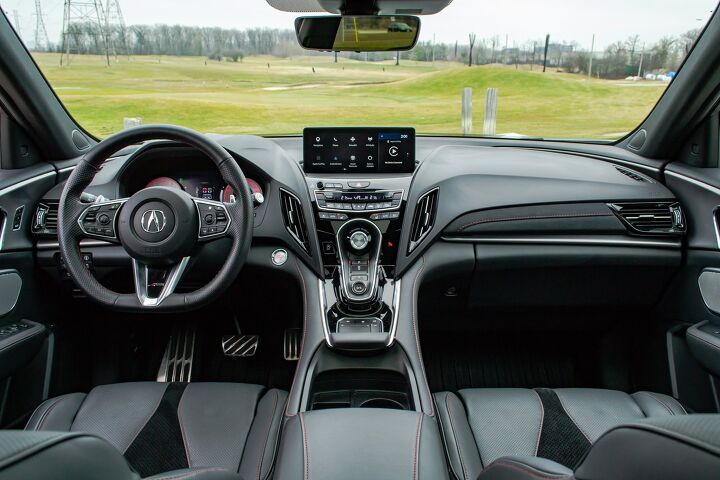


































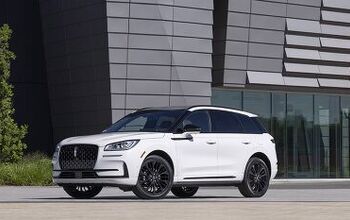
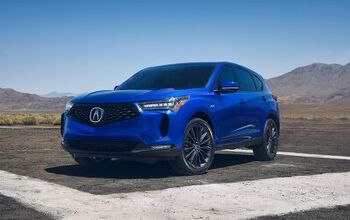


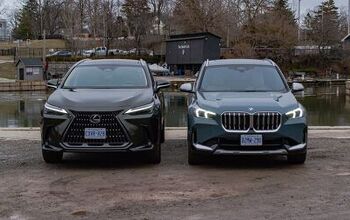
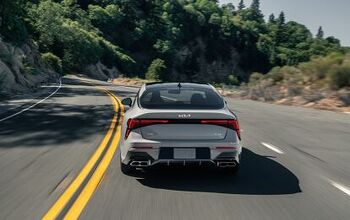


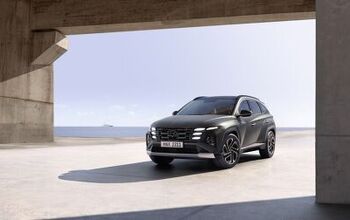


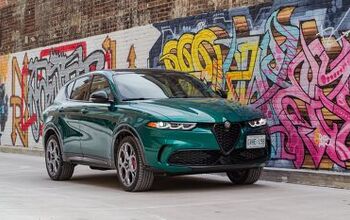



Comments
Join the conversation
I really didn't give the RDX at look. We test drove the corsair 2.3 twin turbo (reserve model) and fell in love. With 295 hp and 310 torque, all wheel drive. My first choice was the GV70, mostly for styling and quality reviews. But my wife (it's her car) felt more comfortable with the ergonomics of the Lincoln. Although the GV70's 2.5 turbo /6speed advertised more h.p., it did not perform or handle as good as the corsair. Price wise the Genesis was about $5,000 more at the dealer. While Lincoln was willing to negotiate below sticker and offered zero percent interest! (big savings). After 6 months of ownership, my wifes choice was a great one. Love this car.